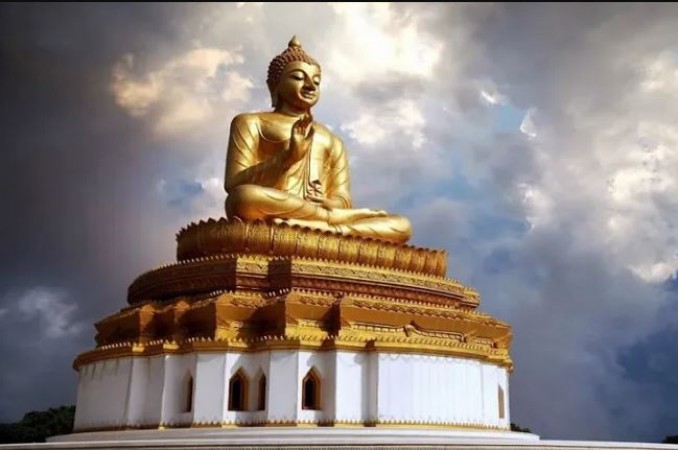
Buddhism, one of the world's major religions, has a rich history and a significant presence across various countries. One of the essential aspects of Buddhism is pilgrimage, which involves visiting sacred sites associated with the life and teachings of Gautama Buddha, the founder of Buddhism. These pilgrimage sites hold immense spiritual importance for Buddhists and provide an opportunity for spiritual growth, reflection, and connection with the teachings of the Buddha. In this article, we will explore some of the most revered Buddhist pilgrimage sites and delve into their spiritual significance.
1. Lumbini: The Birthplace of the Buddha
Lumbini, located in present-day Nepal, holds immense significance as the birthplace of Siddhartha Gautama, who later became the Buddha. The site features the sacred Maya Devi Temple, which marks the exact spot of the Buddha's birth. Pilgrims visit Lumbini to pay homage to the Buddha's beginnings and to gain a deeper understanding of his life.
2. Bodh Gaya: The Enlightenment Site
Bodh Gaya, situated in the Indian state of Bihar, is where the Buddha attained enlightenment under the Bodhi Tree. This site is regarded as one of the most sacred places in Buddhism. The Mahabodhi Temple, a UNESCO World Heritage site, stands as a symbol of the Buddha's enlightenment. Pilgrims engage in meditation and offer prayers at this hallowed site, seeking spiritual awakening and enlightenment.
3. Sarnath: The First Sermon
Sarnath, near Varanasi in India, is where the Buddha delivered his first sermon after attaining enlightenment. This significant event marked the establishment of the Buddhist Sangha (community of monks) and the spread of the Buddha's teachings. Pilgrims visit Sarnath to contemplate the teachings and to experience the peaceful ambiance that resonates with the essence of Buddhism.
4. Kushinagar: The Final Passing
Kushinagar, located in Uttar Pradesh, India, is the place where the Buddha passed away, reaching the state of Parinirvana (final liberation). The Mahaparinirvana Temple in Kushinagar serves as a pilgrimage site where followers pay their respects to the Buddha and reflect on the impermanence of life and the ultimate goal of liberation from suffering.
5. Shravasti: Buddha's Miracle Performances
Shravasti, an ancient city in present-day Uttar Pradesh, India, holds significance as the place where the Buddha performed many miracles and delivered numerous discourses. The Jetavana Monastery, where the Buddha spent a significant part of his monastic life, is a prominent pilgrimage site. Visitors come to Shravasti to witness the remnants of this glorious era and to learn from the Buddha's teachings.
6. Nalanda: The Ancient Seat of Learning
Nalanda, located in Bihar, India, was once an illustrious center of Buddhist education and monastic life. The ancient Nalanda University attracted scholars and students from across the world, making it a hub of intellectual and spiritual exchange. Today, pilgrims visit the ruins of Nalanda to connect with the rich Buddhist heritage and seek inspiration from the pursuit of knowledge and wisdom.
7. Sanchi: The Great Stupa
Sanchi, in the state of Madhya Pradesh, India, is home to the Great Stupa, an architectural marvel and a significant Buddhist pilgrimage site. The stupa is adorned with intricate carvings depicting the life and teachings of the Buddha. Pilgrims visit Sanchi to pay homage to the Buddha and to experience the awe-inspiring grandeur of the stupa, which serves as a reminder of the enlightened path.
8. Ajanta and Ellora Caves: Architectural Marvels
The Ajanta and Ellora Caves, located in Maharashtra, India, are renowned for their stunning Buddhist cave paintings and sculptures. These UNESCO World Heritage sites showcase the artistic brilliance of ancient Buddhist craftsmen. Pilgrims visit these caves to admire the intricate artwork and immerse themselves in the spiritual ambiance, gaining a deeper appreciation for the fusion of art and spirituality.
9. Koyasan: A Tranquil Retreat
Koyasan, nestled amidst the mountains of Wakayama Prefecture in Japan, is a serene and spiritual destination. It is home to over 100 Buddhist temples, including the renowned Kongobuji Temple and Okunoin Cemetery. Pilgrims visit Koyasan to escape the worldly distractions, engage in meditation, and seek spiritual solace in the tranquil surroundings.
10. Mount Kailash: The Sacred Abode of Shiva
Mount Kailash, located in Tibet, is considered one of the most sacred mountains in Buddhism, Hinduism, and Jainism. Buddhists believe that circumambulating this holy mountain brings great spiritual merit and purifies one's sins. Pilgrims embark on the challenging Kailash Mansarovar Yatra to experience the divine presence and connect with the higher realms of consciousness.
Buddhist pilgrimage sites hold immense spiritual importance and provide a transformative experience for believers. These sacred places offer an opportunity for introspection, spiritual growth, and connection with the teachings of the Buddha. Whether it is the birthplace of the Buddha in Lumbini, the enlightenment site in Bodh Gaya, or the ancient ruins of Nalanda, each pilgrimage site offers a unique journey of self-discovery and devotion.
Some special things about the 150-foot-long and 25-foot-wide statue of Adiyogi
Decoding the DNA of Indian Politics: A Historical Perspective
Kerala Devotees Engage in KARKIDAKA VAVU BALI Ritual Statewide